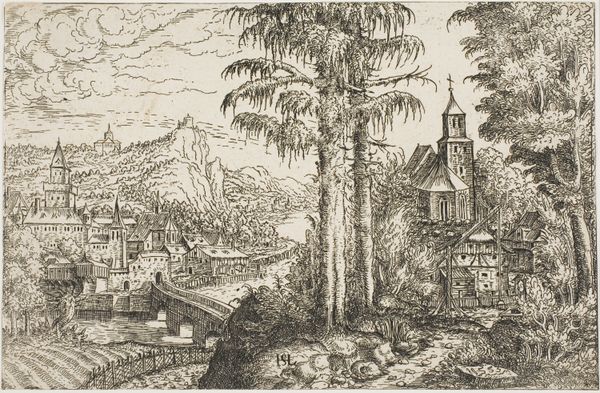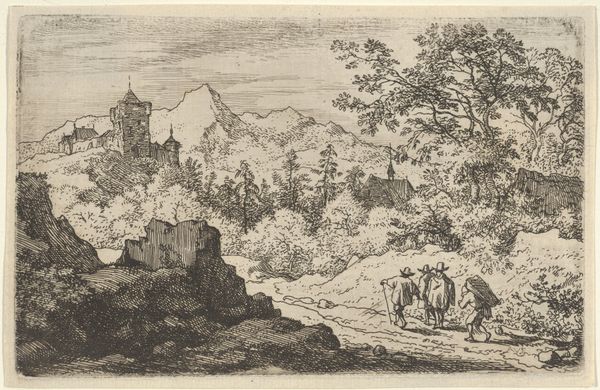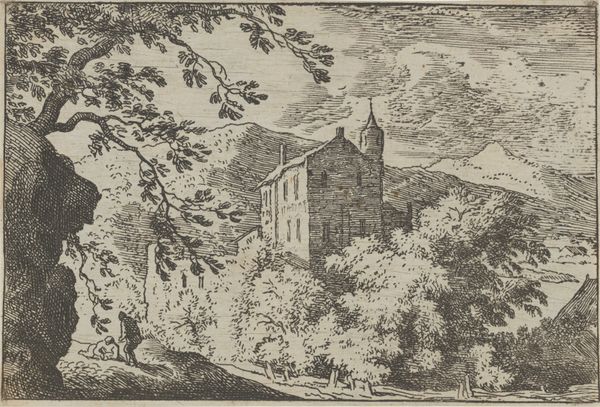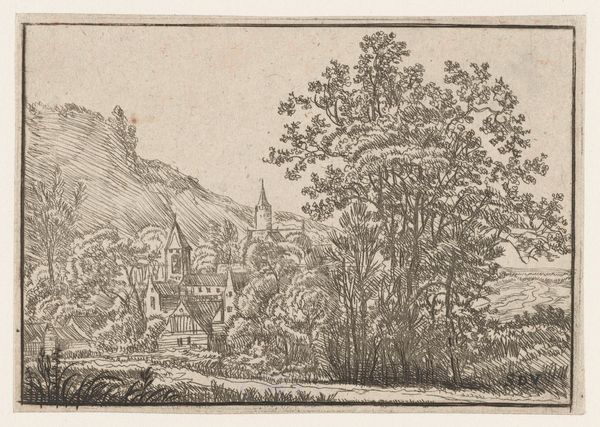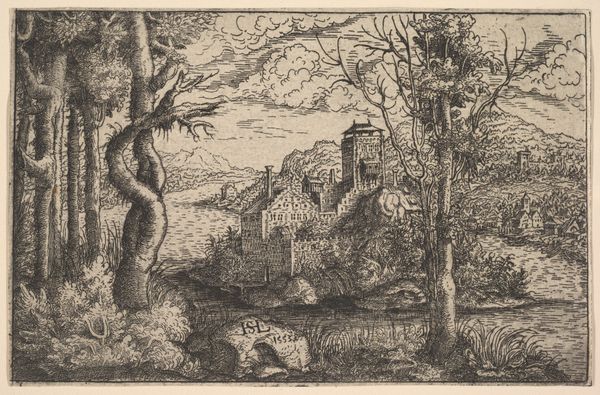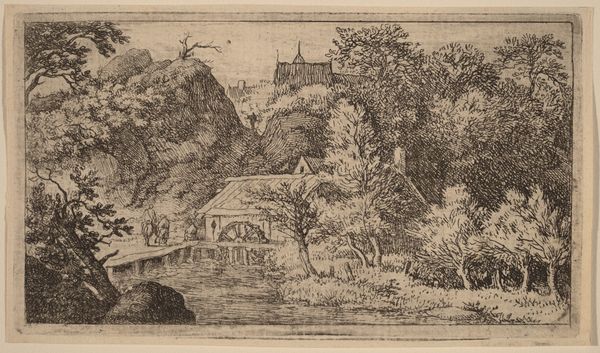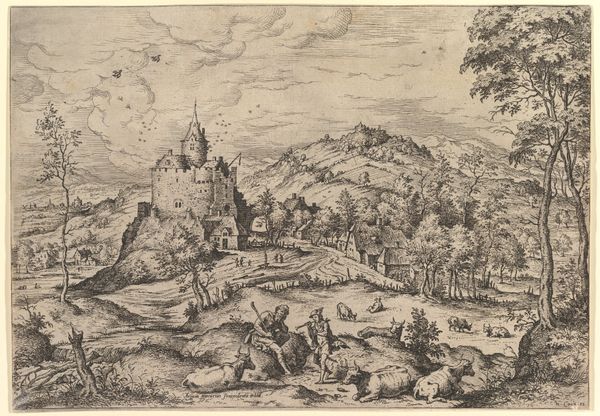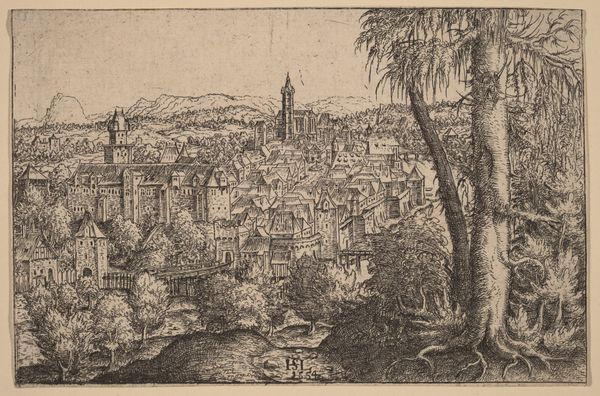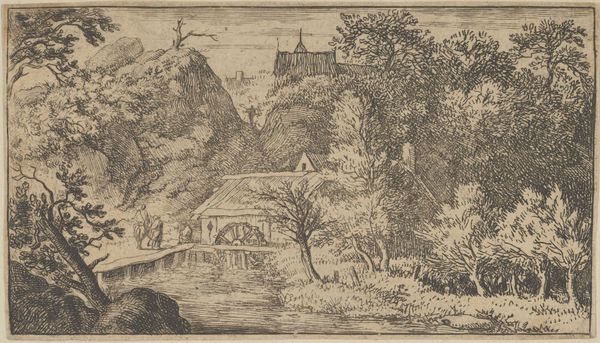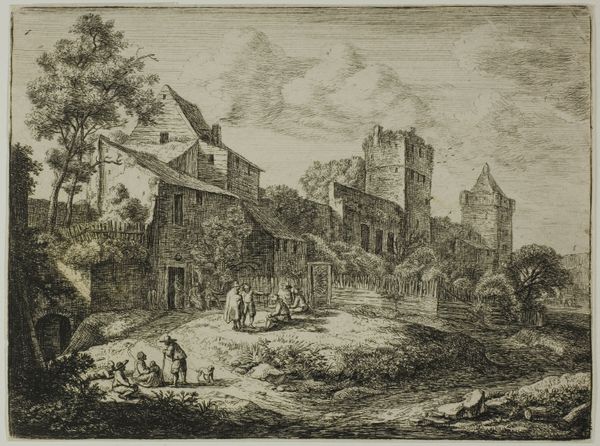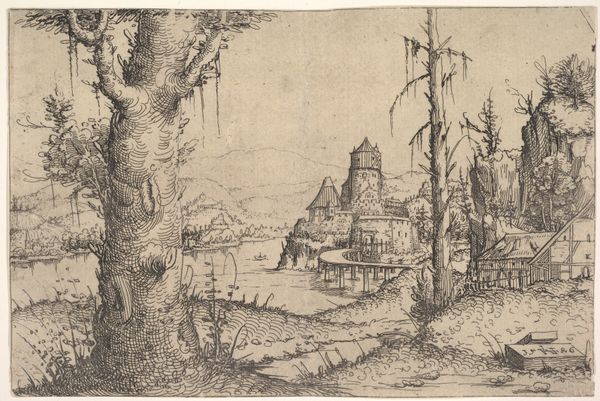
drawing, print, ink, woodcut
#
drawing
#
ink drawing
#
pen drawing
# print
#
landscape
#
ink
#
woodcut
#
northern-renaissance
Copyright: National Gallery of Art: CC0 1.0
Curator: This is "Mountainous Landscape with a Village" by Hanns Lautensack, created in 1553. The artist rendered this scene with ink, employing a combination of drawing and woodcut techniques to achieve such detail. Editor: There's a wonderful contrast at play here. The scene feels very ordered, controlled, almost like a meticulously designed stage set. At the same time, there’s a wildness in the dense foliage and the rugged mountain peaks. Curator: Yes, the artist does offer us dualities! Consider the village; clustered around the church. Its architecture implies security and community. A place for social congregation but also spiritual solace under divine authority. This suggests an era of significant cultural identity. Editor: You can see it too in the almost overwhelming level of detail achieved with the cross-hatching in the ink. The meticulous application of line really brings depth and tonality to the work. Even in a scaled down print, you can perceive so much texture, such as with the thatched roofs, stonework on the bridge, and volume in the tree canopy. Curator: These precise techniques reflect a Northern Renaissance concern with depicting the natural world accurately. The level of detail in the trees, for instance, shows a keen observation of the landscape and a desire to capture its essence through a vernacular. It is worth remembering the role the German landscape tradition would have in defining homeland after religious conflict. Editor: Absolutely. There's also an interesting compositional rhythm. The bridge in the foreground, drawing us toward the village buildings in the midground, and then beyond towards those mountain peaks, suggesting something greater than even what’s within immediate perception. Curator: Bridges are commonly represented symbolically. Here it evokes the threshold between the earthly realm and perhaps the divine. The village nestled under the mountain peak could symbolize aspirations toward a higher state of being, both literally and spiritually. The tower may reinforce it by suggesting both human achievement and the pursuit of enlightenment. Editor: It’s quite striking how the dark, controlled line-work gives the print this somewhat subdued but intense aura. Even after five centuries, its textures still offer a complex, nuanced engagement for the modern eye. Curator: It's the cultural memory etched within it, too. We feel the history imbued by these symbols. They linger long after the lines are drawn. Editor: I see it as a testament to what one can do with simply ink and a keen eye for light and dark.
Comments
No comments
Be the first to comment and join the conversation on the ultimate creative platform.

